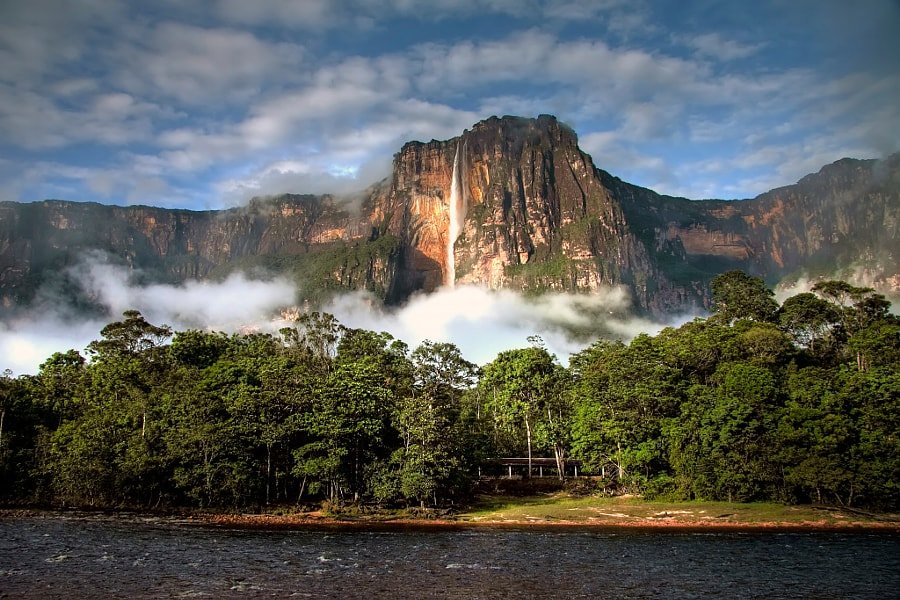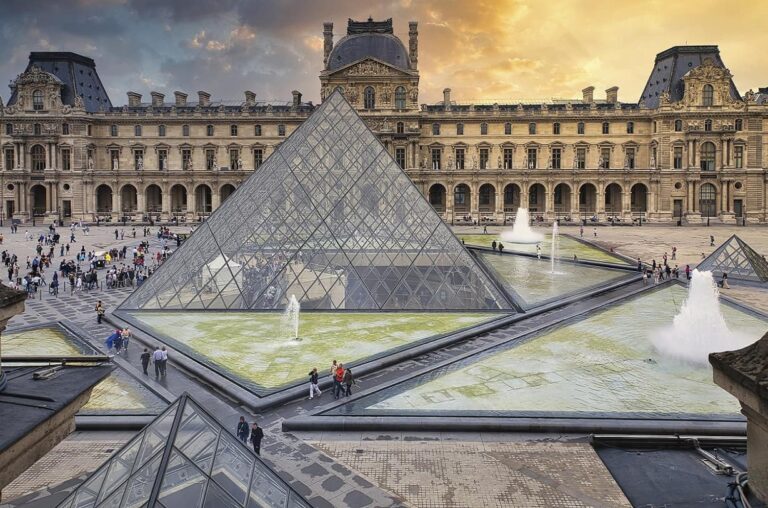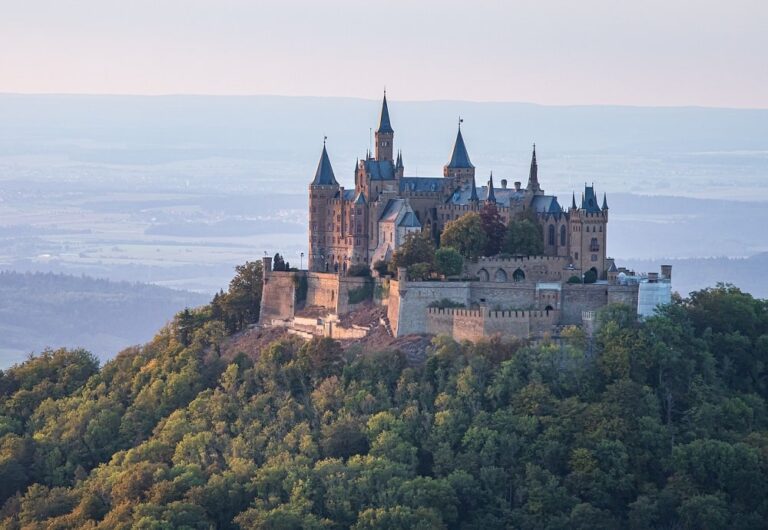Angel falls – World’s Highest Waterfall in Venezuela
Last Updated on 27th March 2024 by admin
Angel Falls, located in the heart of Venezuela, is considered one of the most magnificent natural wonders of the world. The falls were discovered by an American aviator named Jimmie Angel in 1933 and are named after him. Angel Falls is a unique and breathtaking waterfall that attracts tourists from all over the world.
In this article, we will explore the history, features, and interesting facts about Angel Falls, as well as discuss the preservation and conservation efforts to protect this wonder of nature.
Table of Contents
World’s Highest Waterfall in Venezuela

Angel Falls (Salto Ángel) is the world’s highest or tallest waterfall, it’s a breathtaking wonder of nature that attracts thousands of visitors to Venezuela from around the world. Angel Falls located in Canaima National Park, and this is the second largest national park in Venezuela. The waterfall cascade goes down to 3212 feet (979 meters) at the base from the Auyán-tepui mountain, which is more than half a mile (approx 1 kilometer) and one of the greatest natural wonders of the world.
Most of the water evaporates in the form of fog or moisture before it hits the ground. Angel Falls is a popular tourist attraction of Venezuela and can only be reached by plane or boat. Visitors can take a guided tour to see the falls up close or opt for a helicopter tour to get a bird’s eye view of the entire area.
The Discovery of Angel Falls
Angel Falls was discovered by Jimmie Angel in 1933 during his search for a gold mine. Angel’s plane crashed during his journey, and he and his companions were forced to make their way through the jungle to find help. Along the way, they stumbled upon the waterfall and named it Angel Falls in honor of their pilot.
The Height and Features of Angel Falls
Angel Falls is the highest uninterrupted waterfall in the world, with a total height of 979 meters (3,212 feet). The waterfall consists of a series of drops that stretch for over 800 meters (2,600 feet) and creates a misty spray
that can be seen from miles away. The water source of Angel Falls comes from the Churun River, which flows into the Carrao River, creating a stunning display of nature’s power.
The Surrounding Landscape of Angel Falls
Angel Falls is located in the Canaima National Park, a UNESCO World Heritage Site. The park is home to a unique ecosystem that includes table mountains, tropical rainforests, and savannahs. The surrounding landscape is filled with diverse flora and fauna, including orchids, bromeliads, jaguars, and giant armadillos. The indigenous Pemon people also reside in the region and have a deep cultural connection to the area.
Interesting Facts About Angel Falls
In addition to its impressive height, Angel Falls has several interesting facts that make it a fascinating destination for travelers. For example, the appearance of the falls changes during the dry and rainy seasons, with the water volume increasing during the rainy season. Angel Falls is also a popular location for adventure sports such as hiking and camping. Visitors can enjoy a range of activities, including exploring the Canaima National Park and taking a boat ride to the base of the falls.
The Origin of Angel Falls
Angel Falls, located in Canaima National Park in Venezuela, is the world’s highest waterfall. The falls were named after American aviator Jimmy Angel, who in 1933, was the first person to fly over the falls. But how was Angel Falls formed?
Geological Formation:
The geological history of Angel Falls began over 200 million years ago, during the time of the supercontinent Pangaea. The area was covered by a shallow sea, and over time, sedimentation formed layers of sandstone and shale.
Around 70 million years ago, tectonic activity began to lift the area, forming the Guiana Shield, a large plateau that covers much of northern South America. The uplift caused the layers of rock to fracture and form deep canyons, including the one that Angel Falls flows through.
The Formation of Angel Falls:
The river that feeds Angel Falls is the Churun River, which originates on the summit of the Auyán-tepui mountain. Auyán-tepui is one of the many tepuis in the region, and it is the largest, covering an area of over 700 square kilometers.
The Churun River flows over the top of Auyán-tepui and then plunges 979 meters over the edge, creating Angel Falls. The falls are created by the combination of the height of the drop and the volume of water that flows over the edge.
Over time, the constant flow of water has eroded the rock beneath the falls, causing the falls to move further upstream. In fact, the falls are still moving upstream at a rate of around one meter every 1,000 years.

The Magnificent Landscape of Canaima National Park
Canaima National Park is a protected area in southeastern Venezuela that is home to some of the most stunning landscapes in the world. Covering an area of over 30,000 square kilometers, it is known for its stunning natural beauty, diverse ecosystem, and unique geological formations, such as table-top mountains called tepuis. The park was established in 1962 and is now a UNESCO World Heritage Site. The park is not only important for its natural beauty and biodiversity, but also for its cultural significance. The park is home to the indigenous Pemon people, who have lived in the region for centuries.
The park is home to a vast array of plant and animal species, many of which are found nowhere else on earth. The park is home to a variety of flora and fauna, including over 300 species of birds, 100 species of mammals, and thousands of plant species, as well as some of the most impressive waterfalls on the planet. In the entire Canaima National Park Angel Falls is undoubtedly the most famous waterfall and the world’s highest waterfall, but visitors can also enjoy other attractions such as the Sapo and Sapito falls, the Kukenan and Roraima tepuis, and the stunning Laguna de Canaima. Canaima National Park is a truly special place that offers visitors a unique and unforgettable experience.
How to get to Angel falls Venezuela
Getting to Angel Falls can be an adventure in itself, but it’s definitely worth the effort. Visitors to Angel Falls can choose from a variety of guided tours to explore the area. Visiting Angel Falls is a once-in-a-lifetime experience, and it’s no wonder that it’s one of the most famous tourist attractions in Venezuela. With stunning natural beauty, unique cultural experiences, and a range of tour options and accommodations, a trip to Angel Falls is sure to be an unforgettable adventure. If you’re considering visiting Angel Falls, here’s what you need to know.
Getting There:
- By Air: The easiest and most convenient way to get to Angel Falls is by flying from Caracas to Ciudad Bolivar, and then taking a smaller plane to Canaima National Park. From there, visitors can take a boat ride up the river to the falls.
- By Land: Visitors can also travel by bus or car from Ciudad Bolivar to Canaima National Park, which takes about 10 hours. This option is more budget-friendly but can be tiring and uncomfortable.
- By Tour: Many tour companies offer guided tours to Angel Falls, which can include transportation, accommodations, and activities. This option is more expensive but can provide a hassle-free and enjoyable experience.
Regardless of the method of transportation, visitors to Angel Falls must be prepared for the humid and unpredictable weather conditions in the region. It’s important to bring appropriate clothing, gear, and supplies, as well as to hire a knowledgeable guide to ensure a safe and enjoyable trip.
Once you arrive in Canaima, you can take a motorized canoe up the Carrao and Churun Rivers to reach the base of the falls. The trip takes about four hours, and you’ll need to make several stops to navigate around rapids and to transfer to smaller boats to pass through narrow channels.
Tour Options:
There are a variety of tour options available for visitors to Angel Falls. Some tours offer day trips to the falls, while others include overnight stays in the park. The most popular tours include a visit to the base of the falls, where you can feel the mist on your face and marvel at the sheer size and power of the falls.
Other tours offer more in-depth experiences, such as trekking through the rainforest, visiting Pemon villages, or exploring other waterfalls in the park. Some tours also offer the opportunity to take a scenic flight over the falls, providing a unique perspective on this natural wonder.
Accommodations:
There are several accommodation options available in Canaima National Park, ranging from rustic lodges to luxury eco-resorts. Many of the lodges are located near the falls and offer stunning views of the surrounding landscape. However, accommodations can be limited, so it’s recommended to book in advance.
The Best Time to Visit Angel Falls
The best time to visit Angel Falls depends on a variety of factors, including weather, water levels, tour availability, and safety considerations. While the rainy season is generally considered the best time to visit for the most impressive views of the falls, the dry season can also provide a quieter and more peaceful experience. With proper planning and consideration of all factors, a trip to Angel Falls is sure to be an unforgettable adventure. However, the best time to visit the falls depends on a variety of factors, including weather conditions, water levels, and tour availability.

Rainy Season:
The rainy season in Venezuela runs from May to November, and this is generally considered the best time to visit Angel Falls. During this time, the falls are at their most spectacular, with a higher volume of water flowing over the edge. The mist and spray from the falls create a rainbow of colors in the sunlight, making for incredible photo opportunities.
However, the rainy season can also make travel to the falls more difficult. Heavy rainfall can cause the rivers to swell, making it harder to navigate by boat. In addition, flights to and from the falls may be cancelled or delayed due to poor weather conditions.
Dry Season:
The dry season in Venezuela runs from December to April, and while the falls are still impressive during this time, the volume of water flowing over the edge is significantly reduced. This can make the falls appear less impressive, with a narrower stream of water cascading over the edge.
However, the dry season can also make travel to the falls easier. The rivers are less swollen, and flights are less likely to be cancelled or delayed due to weather conditions. In addition, there are fewer tourists visiting the falls during the dry season, so it can be a quieter and more peaceful time to visit.
Considerations:
When planning a trip to Angel Falls, it’s important to consider factors beyond the weather. Tour availability can also be a consideration, as some tours may not operate during certain times of the year. Accommodations can also be limited, so it’s important to book in advance.
In addition, it’s important to consider any travel advisories or warnings in the region. Venezuela has experienced political and economic instability in recent years, and there are safety concerns in some areas of the country. It’s important to research the situation before planning a trip and to take precautions to ensure a safe and enjoyable visit.
Preserving Angel Falls
Preserving the beauty and integrity of Angel Falls is a top priority for the Venezuelan government and the indigenous Pemon people. To protect the area, access to the falls is restricted to guided tours only, and visitors are required to follow strict guidelines for behavior and conservation. This helps to ensure that the area remains pristine for generations to come. To preserve this unique and fragile ecosystem, efforts have been made to protect the park and its surrounding areas.

Conservation Efforts:
Canaima National Park was established in 1962 and covers an area of approximately 30,000 square kilometers. The park is home to a diverse range of flora and fauna, including endangered species such as the giant otter, jaguar, and harpy eagle. In addition to the falls, the park contains other important natural features such as mountains, forests, and rivers.
To preserve this unique ecosystem, the park has been designated a UNESCO World Heritage site, and a range of conservation efforts have been implemented. These include:
- Protection of wildlife: Hunting is prohibited in the park, and efforts have been made to protect endangered species. Park rangers and guides also educate visitors on the importance of respecting and protecting the wildlife and their habitats.
- Sustainable tourism: Tourism is an important source of income for the region, but it must be managed in a sustainable way. Efforts have been made to limit the number of visitors to the falls, and to encourage responsible tourism practices such as using biodegradable products and minimizing waste.
- Cultural preservation: The park is home to several indigenous communities, including the Pemon people. Efforts have been made to preserve their cultural traditions and promote sustainable economic opportunities such as community-based tourism.
Challenges:
Despite these conservation efforts, the park and the falls face a number of challenges. Illegal mining and deforestation in the surrounding areas pose a threat to the park’s biodiversity, and the effects of climate change could also impact the falls and the surrounding ecosystem.
In addition, the political and economic instability in Venezuela has made it difficult to allocate resources and support conservation efforts. However, despite these challenges, there are ongoing efforts to protect this unique and important natural and cultural site.
FAQs
- Where is Angel falls?
Angel Falls is located in Venezuela’s Canaima National Park, in the southeastern region of the country.
- Can you swim in Angel Falls?
No, swimming in the waterfall is not allowed due to the strong currents and dangerous conditions.
- How do you get to Angel Falls?
Visitors can access Angel Falls through a variety of transportation methods, including planes, boats, and hiking.
- What is the best time to visit Angel Falls?
The best time to visit Angel Falls is during the rainy season from May to November when the waterfall is at its most impressive.
- Are there any accommodations near Angel Falls?
Yes, there are several accommodations available near Angel Falls, including hotels, lodges, and campsites.
- Is it safe to travel to Angel Falls?
Yes, as long as visitors take the necessary precautions and follow safety guidelines, traveling to Angel Falls is generally safe.
Angel Falls is a natural wonder that should be on everyone’s bucket list. Its sheer size and beauty make it one of the most impressive waterfalls on the planet, and the surrounding rainforest provides visitors with a unique and unforgettable experience. Whether you choose to take a boat tour, a trek, or a helicopter tour, visiting Angel Falls is an experience that you will never forget.






